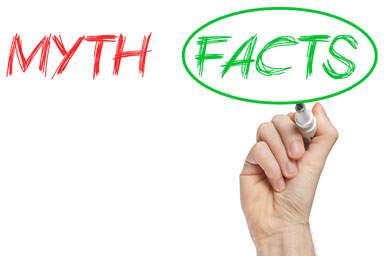 If you have student loans, you’ve no doubt heard about student loan forgiveness. You have probably seen ads on TV promising instant ‘student loan relief.’ Or received mailers from companies telling you they know the ‘secret’ to eliminating your student loans. Of course, they’re willing to share that secret – for a hefty price.
If you have student loans, you’ve no doubt heard about student loan forgiveness. You have probably seen ads on TV promising instant ‘student loan relief.’ Or received mailers from companies telling you they know the ‘secret’ to eliminating your student loans. Of course, they’re willing to share that secret – for a hefty price.
The number of scams involving high-priced student loan debt relief is staggering. It’s gotten so bad that last month, Illinois Attorney General Lisa Madigan filed suit against two of these so-called student debt relief companies, charging them with deceptive marketing. It’s only a matter of time before other states start cracking down.
But with student loan debt approaching $1.2 trillion and nearly 7 million student loan borrowers in default, there’s no doubt borrowers need help finding real solutions. The hard truth is, there are no magical, instant tricks to make student loans disappear, but there are options that can make forgiveness an achievable goal.
Take a look at the myths and the facts regarding student loan forgiveness.
MYTH: All student loan borrowers are entitled to enroll in the ‘Obama Forgiveness Program.’
FACT: First, there is nothing called the ‘Obama Forgiveness Program’ or ‘Obama Loan Forgiveness.’ However, there are a number of federal student loan repayment programs that offer the potential for loan forgiveness. These plans include:
Income-Based Repayment (IBR): IBR is a federal repayment plan that allows you to make payments based on your income and family size. Payments are set for 12 months, and you must certify your income annually to stay on the program. Any balance remaining after 25 years on IBR will be forgiven. This forgiven balance may be subject to income taxes.
Pay As You Earn: Similar to IBR, Pay As You Earn is a federal repayment plan that allows you to make reduced payments based on income. Only certain newer borrowers will qualify for Pay As You Earn. You must also certify your income annually. Any balance remaining after 20 years on Pay As You Earn is forgiven; the forgiven balance may be subject to income taxes.
Public Service Loan Forgiveness: This program provides an opportunity for you to get out of debt within ten years if you work in a public service job. You must meet a specific set of criteria to qualify. You can learn more details here.
MYTH: If I qualify for loan forgiveness, my student loan debt will immediately disappear.
FACT: Most borrowers who qualify for federal student loan forgiveness still have to pay back a portion of their debt – from 10 to 25 years’ worth – after which the the federal government ‘forgives’ the remaining balance. However, these programs will keep your payments affordable.
MYTH: If I don’t qualify for federal student loan forgiveness, I can just pay someone to arrange student loan forgiveness.
FACT: This is simply not true. Any person or company telling you otherwise is not being honest about what they can offer. Remember – if something seems too good to be true, it probably is.
MYTH: Without student loan forgiveness, I’m stuck with whatever repayment terms my loan servicer gives me.
FACT: Even if you don’t qualify for federal loan forgiveness under one of these plans, there are a number of repayment options, from Graduated and Extended Repayment to federal consolidation, that apply to a much wider range of borrowers and may make repayment more manageable.
If you need help understanding the student loan repayment options available to you or want to learn how your student loan debt can impact your overall financial outlook, check out our Student Loan Counseling.
Use our Student Loan Payoff Calculator to estimate how long it will take to pay off your student loans using your current repayment plan.





